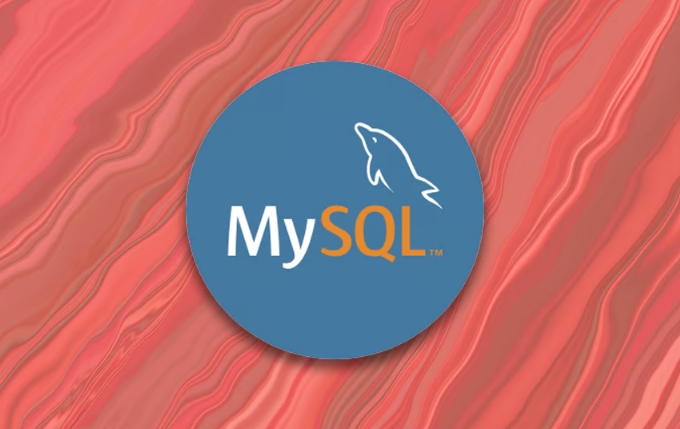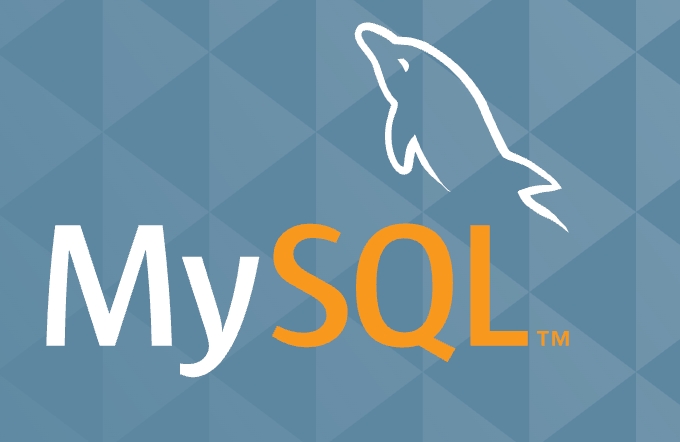To connect a Java program to a MySQL database, you need to prepare dependencies, load drivers, and establish connections. 1. Add MySQL driver dependencies. The Maven project introduces mysql-connector-java in pom.xml. The jar package is manually added to non-Maven projects; 2. explicitly load the JDBC driver class and use Class.forName("com.mysql.cj.jdbc.Driver") to ensure compatibility; 3. Correctly configure the URL, username and password when establishing a connection, pay attention to the database address, port, time zone and SSL settings; if the connection fails, check the MySQL running status, network access permissions, username and password are correct, firewall rules, and log information.

Connecting Java programs to MySQL database is not complicated. As long as you prepare several key points, you can operate the database smoothly. Below I will explain how to do it in terms of dependency introduction, driver loading, and connection establishment.

Add MySQL driver dependencies
Java To connect to MySQL, you must first have a corresponding JDBC driver. If you are using Maven project, just add the following dependencies in pom.xml :
<dependency>
<groupId>mysql</groupId>
<artifactId>mysql-connector-java</artifactId>
<version>8.0.33</version>
</dependency> If it is not a Maven project, you can download the jar package of mysql-connector-java on the official website, and then manually add it to the project's lib directory and add the build path.

Note: The corresponding driver versions of different versions of MySQL may be different. It is recommended to choose the appropriate driver according to your own database version.
Loading JDBC driver class
Although many frameworks now automatically load drivers, it is recommended to load driver classes explicitly in order to ensure compatibility. The code is usually like this:

Class.forName("com.mysql.cj.jdbc.Driver");The purpose of this step is to tell the JVM which JDBC driver to use to handle database connection requests. If this step is omitted, problems may occur in some older versions of JDKs or in specific environments.
Establish a database connection
The next step is to really establish the connection. The basic writing method is as follows:
String url = "jdbc:mysql://localhost:3306/your_database?useSSL=false&serverTimezone=UTC"; String user = "your_username"; String password = "your_password"; Connection conn = DriverManager.getConnection(url, user, password);
A few points to note here:
-
localhostin the URL is the database address, which can be replaced with an IP or domain name according to the actual situation; -
3306is the default port. If the MySQL port is changed, it must be modified accordingly; - Replace
your_databasewith the specific database name you want to connect to; - Common parameters include
useSSL=false(whether SSL is enabled) andserverTimezone=UTC(set time zone). If these are not added, errors will sometimes occur or there will be problems with the time data; - The username and password must be correct, otherwise the connection will fail.
What should I do if I can't connect?
If you find that you can't connect to the database after running the program, you can check it from the following directions:
- Check if MySQL is running;
- Ensure that the network can access the database server (if it is a remote database);
- Check whether the username and password are correct;
- Check whether the database allows the current user to connect from the current host;
- Check whether the firewall or security group rules have released port 3306;
- Check for more detailed error information in the log.
Basically these are the steps. It doesn't seem difficult, but in actual development, the most prone thing to problems is often configuration items or permission settings, such as not opening remote access permissions, wrong URLs, mismatch in driver versions, etc. By sorting out these details, it won’t be too much trouble to connect to the database.
The above is the detailed content of how to connect to mysql database from java. For more information, please follow other related articles on the PHP Chinese website!

Hot AI Tools

Undress AI Tool
Undress images for free

Undresser.AI Undress
AI-powered app for creating realistic nude photos

AI Clothes Remover
Online AI tool for removing clothes from photos.

Clothoff.io
AI clothes remover

Video Face Swap
Swap faces in any video effortlessly with our completely free AI face swap tool!

Hot Article

Hot Tools

Notepad++7.3.1
Easy-to-use and free code editor

SublimeText3 Chinese version
Chinese version, very easy to use

Zend Studio 13.0.1
Powerful PHP integrated development environment

Dreamweaver CS6
Visual web development tools

SublimeText3 Mac version
God-level code editing software (SublimeText3)

Hot Topics
 Establishing secure remote connections to a MySQL server
Jul 04, 2025 am 01:44 AM
Establishing secure remote connections to a MySQL server
Jul 04, 2025 am 01:44 AM
TosecurelyconnecttoaremoteMySQLserver,useSSHtunneling,configureMySQLforremoteaccess,setfirewallrules,andconsiderSSLencryption.First,establishanSSHtunnelwithssh-L3307:localhost:3306user@remote-server-Nandconnectviamysql-h127.0.0.1-P3307.Second,editMyS
 Performing logical backups using mysqldump in MySQL
Jul 06, 2025 am 02:55 AM
Performing logical backups using mysqldump in MySQL
Jul 06, 2025 am 02:55 AM
mysqldump is a common tool for performing logical backups of MySQL databases. It generates SQL files containing CREATE and INSERT statements to rebuild the database. 1. It does not back up the original file, but converts the database structure and content into portable SQL commands; 2. It is suitable for small databases or selective recovery, and is not suitable for fast recovery of TB-level data; 3. Common options include --single-transaction, --databases, --all-databases, --routines, etc.; 4. Use mysql command to import during recovery, and can turn off foreign key checks to improve speed; 5. It is recommended to test backup regularly, use compression, and automatic adjustment.
 Analyzing the MySQL Slow Query Log to Find Performance Bottlenecks
Jul 04, 2025 am 02:46 AM
Analyzing the MySQL Slow Query Log to Find Performance Bottlenecks
Jul 04, 2025 am 02:46 AM
Turn on MySQL slow query logs and analyze locationable performance issues. 1. Edit the configuration file or dynamically set slow_query_log and long_query_time; 2. The log contains key fields such as Query_time, Lock_time, Rows_examined to assist in judging efficiency bottlenecks; 3. Use mysqldumpslow or pt-query-digest tools to efficiently analyze logs; 4. Optimization suggestions include adding indexes, avoiding SELECT*, splitting complex queries, etc. For example, adding an index to user_id can significantly reduce the number of scanned rows and improve query efficiency.
 Handling NULL Values in MySQL Columns and Queries
Jul 05, 2025 am 02:46 AM
Handling NULL Values in MySQL Columns and Queries
Jul 05, 2025 am 02:46 AM
When handling NULL values ??in MySQL, please note: 1. When designing the table, the key fields are set to NOTNULL, and optional fields are allowed NULL; 2. ISNULL or ISNOTNULL must be used with = or !=; 3. IFNULL or COALESCE functions can be used to replace the display default values; 4. Be cautious when using NULL values ??directly when inserting or updating, and pay attention to the data source and ORM framework processing methods. NULL represents an unknown value and does not equal any value, including itself. Therefore, be careful when querying, counting, and connecting tables to avoid missing data or logical errors. Rational use of functions and constraints can effectively reduce interference caused by NULL.
 Calculating Database and Table Sizes in MySQL
Jul 06, 2025 am 02:41 AM
Calculating Database and Table Sizes in MySQL
Jul 06, 2025 am 02:41 AM
To view the size of the MySQL database and table, you can query the information_schema directly or use the command line tool. 1. Check the entire database size: Execute the SQL statement SELECTtable_schemaAS'Database',SUM(data_length index_length)/1024/1024AS'Size(MB)'FROMinformation_schema.tablesGROUPBYtable_schema; you can get the total size of all databases, or add WHERE conditions to limit the specific database; 2. Check the single table size: use SELECTta
 Handling character sets and collations issues in MySQL
Jul 08, 2025 am 02:51 AM
Handling character sets and collations issues in MySQL
Jul 08, 2025 am 02:51 AM
Character set and sorting rules issues are common when cross-platform migration or multi-person development, resulting in garbled code or inconsistent query. There are three core solutions: First, check and unify the character set of database, table, and fields to utf8mb4, view through SHOWCREATEDATABASE/TABLE, and modify it with ALTER statement; second, specify the utf8mb4 character set when the client connects, and set it in connection parameters or execute SETNAMES; third, select the sorting rules reasonably, and recommend using utf8mb4_unicode_ci to ensure the accuracy of comparison and sorting, and specify or modify it through ALTER when building the library and table.
 Aggregating data with GROUP BY and HAVING clauses in MySQL
Jul 05, 2025 am 02:42 AM
Aggregating data with GROUP BY and HAVING clauses in MySQL
Jul 05, 2025 am 02:42 AM
GROUPBY is used to group data by field and perform aggregation operations, and HAVING is used to filter the results after grouping. For example, using GROUPBYcustomer_id can calculate the total consumption amount of each customer; using HAVING can filter out customers with a total consumption of more than 1,000. The non-aggregated fields after SELECT must appear in GROUPBY, and HAVING can be conditionally filtered using an alias or original expressions. Common techniques include counting the number of each group, grouping multiple fields, and filtering with multiple conditions.
 Implementing Transactions and Understanding ACID Properties in MySQL
Jul 08, 2025 am 02:50 AM
Implementing Transactions and Understanding ACID Properties in MySQL
Jul 08, 2025 am 02:50 AM
MySQL supports transaction processing, and uses the InnoDB storage engine to ensure data consistency and integrity. 1. Transactions are a set of SQL operations, either all succeed or all fail to roll back; 2. ACID attributes include atomicity, consistency, isolation and persistence; 3. The statements that manually control transactions are STARTTRANSACTION, COMMIT and ROLLBACK; 4. The four isolation levels include read not committed, read submitted, repeatable read and serialization; 5. Use transactions correctly to avoid long-term operation, turn off automatic commits, and reasonably handle locks and exceptions. Through these mechanisms, MySQL can achieve high reliability and concurrent control.






